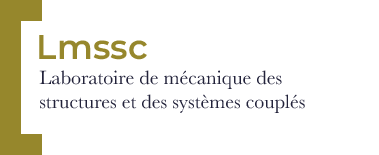Effect of a resonant piezoelectric shunt on the structural vibrations of a truncated hydrofoil
Résumé
Immersed marine structures such as hydrofoils or propeller blades may undergo severe flow induced vibrations when a hydrodynamic excitation source couples with a natural frequency of the structure. This phenomenon, known as lock-in, induces acoustic radiations and structural fatigue. High amplitude vibrations will also impact the near-wake region leading to a modification of the vortex dynamics. The present study consists of a numerical and experimental investigation of the impact of a resonant piezoelectric shunt on the structural vibrations of a truncated hydrofoil. The system consists of a MFC piezoelectric patch integrated in a NACA 66-306 profile and connected to a ferrite core inductor. A finite element model was created using the software COMSOL Multiphysics in order to predict the electro-mechanical properties of the system. Experimental tests are then realized at zero degrees of incidence in the hydrodynamic tunnel of the French Naval Academy Research Institute at zero flow velocity and at 4.4 m.s -1 . The mechanical response of the hydrofoil is investigated using laser vibrometry. The electrical resonance of the shunt is tuned to reduce the vibrations induced by the lock-in with the twisting mode occurring at a flow velocity of 4.4 m.s -1 . A vibration reduction of 59 % is observed for this particular set-up. The passive resonant piezoelectric shunt is an efficient, simple and cost-effective technique to reduce flow induced vibrations. It will pave the way for various smart structure applications.

